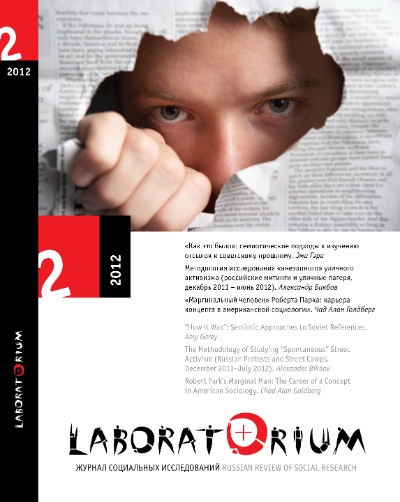“How it Was”: Semiotic Approaches to Soviet References
Main Article Content
Abstract
Instances of cultural remembering have three terms: an event in the world, sensorially apprehended; a private, mental image of that event; and public depictions of it. Historians sift through representations in newspapers, diaries, artifacts, and interview materials in order to understand, through triangulation, to understand a now-vanished moment—to answer the question, “What happened?” However, analyzing the process of remembering requires a different question, “What is happening?” That is, how are references to the past currently created, circulated, and understood? Using data from sots-art visual parodies, nostalgic discourses in rural Siberia, and Soviet bloc sketch comedy competitions, this article examines the ways in which historical images are reworked both in everyday interaction and global media contexts. This article first describes how Peircean semiotics concretizes the mechanisms linking personal experiences and public representations, then uses this lens to examine how two ways of transmitting information about the past—interpersonal and mass-mediated—differ in their implications for meaning making, resignification, and censorship. In English, extended summary in Russian.
Keywords
Russia, Discourse Analysis, Comedy, Post-Soviet Transformations
Abstract 222 | PDF full paper Downloads 127 PDF extended summary (Русский) Downloads 79 HTML full paper Downloads 61 HTML extended summary (Русский) Downloads 19

